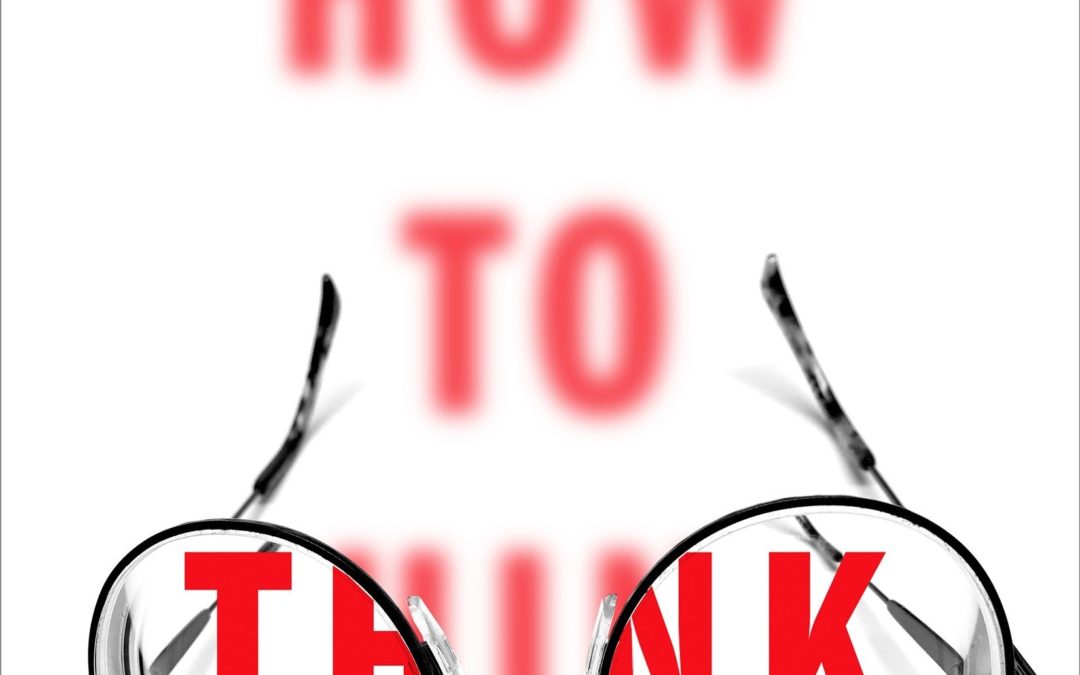How to Think: A Survival Guide For a World at Odds
By Alan Jacobs
New York: Currency, 2017
–Review by Landrum P. Leavell III, Th.D.
How many times have we heard someone or ourselves ask the question, “What were you thinking?” Alan Jacobs believes we would all benefit from a better understanding of what it means to think well. Teaching in the Honors College at Baylor University, Jacobs has read lots of books with radically incompatible models of what thinking is, most of them he calls depressing reads. There is a wide-ranging litany of the ways that thinking goes astray.
Jacobs notes all of the names of these paths to error: “Anchoring, availability cascades, confirmation bias, the Dunning-Kruger effect, the endowment effect, framing effects, group attrition errors, halo effects, ingroup and outgroup homogeneity biases, recency illusions… What a chronicle of ineptitude, arrogance, sheer dumbassery.” [I had to include that quote!] (12) Some of the books chronicling these errors include, Thinking, Fast and Slow, The Happiness Hypothesis: Finding Modern Truth in Ancient Wisdom, The Righteous Mind: Why Good People Are Divided by Politics and Religion, and Predictably Irrational: The Hidden Forces That Shape Our Decisions.
Jacobs says thinking is “testing your own responses and weighing the available evidence; it’s grasping as best you can and with all available and relevant senses, what is, and it’s also speculating, as carefully and responsibly as you can, about what might be. And it’s knowing when not to go it alone, and whom you should ask for help.” He goes on to say “thinking will always be an art rather than a science. (Science can help, though; science is our friend.)” (14) I also liked his use of the term “our informational habits.”
“Sometimes there’s a blessed convergence between what you read and what you need.” Jacobs was doing some reading for unrelated reasons and came across essays by Marilynne Robinson and T. S. Eliot. Robinson’s 1994 essay “Puritans and Prigs,” which challenged the contemptuous attitudes many people have toward the Puritans. She spoke of the traits we label “puritan”—rigidity, narrowness of mind, judgmentalism—which are precisely the ones people display whenever they talk about the Puritans. She noted that this was “an example of our collective eagerness to disparage without knowledge or information about the thing disparaged, when the reward is the pleasure of sharing an attitude one knows is socially approved.” (20-21) She cites the “currency of likes, faves, followers, and friends… That instinct for consensus is magnified and intensified in our era because we deal daily with the torrent of what claims to be information but is often nonsense.” This is no new thing.
It’s interesting that in 1920, almost a century ago, T. S. Eliot thought this phenomenon was a product of the nineteenth century. His conclusion—“when we do not know, or when we do not know enough, we tend always to substitute emotions for thoughts.” The problem for Eliot was not that the emotions are involved but that they substitute for thought, that they replace thinking. (22)
Being an academic makes Jacobs’ observation more ironic: “Academics have always been afflicted by unusually high levels of conformity to expectations… You don’t get good grades without saying the sorts of things that your professors like to hear.” He concludes, “Academic life doesn’t do much to help one think, at least not in the sense in which I am commending thinking.” (24)
There is a very interesting story about Megan Phelps-Roper, a member of Westboro Baptist Church in Topeka, Kansas, a church founded by her grandfather Fred Phelps. She began to use Twitter to spread the Westboro message. Most of us know the story of their #godhatesfags message, protesting at funerals, et al. What she didn’t anticipate on Twitter was that people talk back to you. She began tweeting at a Jewish web developer named David Abitbol. He responded with bemused humor and later said, “I wanted to be like really nice so that they would have a hard time hating me.” That threw Phelps-Roper off-balance. (32)
All of us are subject to what Gary Saul Morson calls “backshadowing”—“foreshadowing after the fact,” the temptation to believe that we can look into the past and discern some point at which the present became inevitable. Phelps-Roper had already set off down the road that would lead her away from Westboro Baptist Church. She began to see those to whom she responded as human, instead of as a faceless RCO—what Susan Friend Harding calls the problem of the “Repugnant Cultural Other.” (26) “Duh!”—the relationship made the difference with Abitbol. They even met in person when Phelps-Roper picketed an event that Abitbol had organized. He had taken the trouble to look into what Westboro members believed and why they believed it. And Abitbol brought up Jesus’ statement about the one without sin casting the first stone! Megan’s own mother had had an illegitimate son, the product of a law school affair.
Abitbol asked deeper and harder questions, not about whether the Bible was true, but about whether her community really bothered to discern and obey what they claimed was their supreme authority in all matters.”(34) She had come to realize that believing in the Bible didn’t necessarily require her to perform the hostility that most Westboro members exemplified. What happened next? You’ll have to read it for yourself.
There are all sorts of interesting references in the book, including Gladwell, Wilt Chamberlain, C. S. Lewis, Ta-Nehisi Coates, John Stuart Mill, and G. K. Chesterton. And of course, metaphors and myths!
The foregone conclusion is that this book, How to Think, will do just that—it’ll make you think! It’s only 150 pages, but it is definitely worth your time. Check it out.
You’re welcome.

